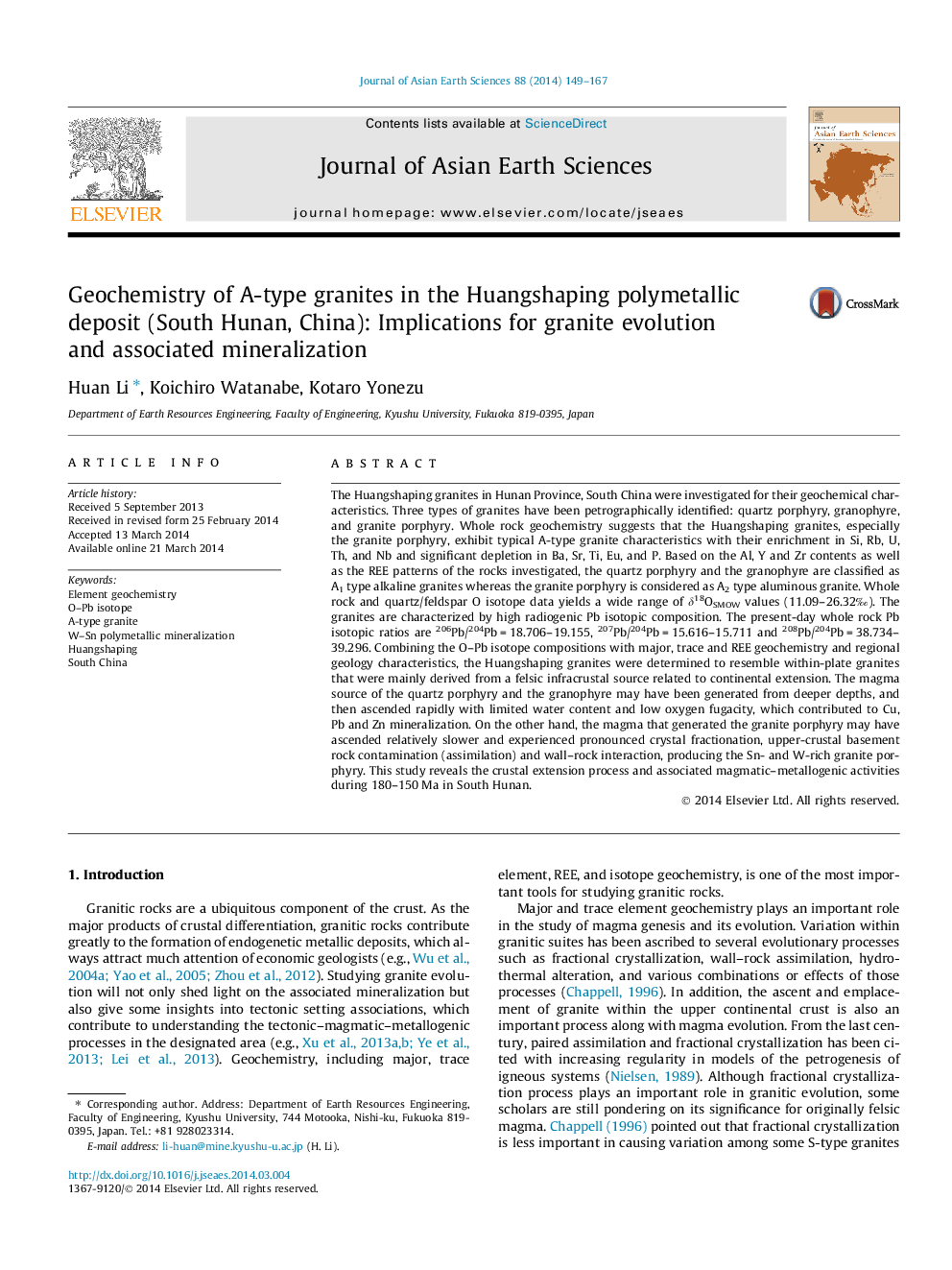| Article ID | Journal | Published Year | Pages | File Type |
|---|---|---|---|---|
| 4730673 | Journal of Asian Earth Sciences | 2014 | 19 Pages |
•A1 and A2 type granites in the Huangshaping deposit have been distinguished.•Genesis of the magmas is related to partial melting and fractional crystallization.•Extremely high δ18O values and disequilibrium 18O/16O fractionations are reported.•Pb isotopic variations indicate different magma sources for the granites.•Relations between granite evolution and metallogenic series have been established.
The Huangshaping granites in Hunan Province, South China were investigated for their geochemical characteristics. Three types of granites have been petrographically identified: quartz porphyry, granophyre, and granite porphyry. Whole rock geochemistry suggests that the Huangshaping granites, especially the granite porphyry, exhibit typical A-type granite characteristics with their enrichment in Si, Rb, U, Th, and Nb and significant depletion in Ba, Sr, Ti, Eu, and P. Based on the Al, Y and Zr contents as well as the REE patterns of the rocks investigated, the quartz porphyry and the granophyre are classified as A1 type alkaline granites whereas the granite porphyry is considered as A2 type aluminous granite. Whole rock and quartz/feldspar O isotope data yields a wide range of δ18OSMOW values (11.09–26.32‰). The granites are characterized by high radiogenic Pb isotopic composition. The present-day whole rock Pb isotopic ratios are 206Pb/204Pb = 18.706–19.155, 207Pb/204Pb = 15.616–15.711 and 208Pb/204Pb = 38.734–39.296. Combining the O–Pb isotope compositions with major, trace and REE geochemistry and regional geology characteristics, the Huangshaping granites were determined to resemble within-plate granites that were mainly derived from a felsic infracrustal source related to continental extension. The magma source of the quartz porphyry and the granophyre may have been generated from deeper depths, and then ascended rapidly with limited water content and low oxygen fugacity, which contributed to Cu, Pb and Zn mineralization. On the other hand, the magma that generated the granite porphyry may have ascended relatively slower and experienced pronounced crystal fractionation, upper-crustal basement rock contamination (assimilation) and wall–rock interaction, producing the Sn- and W-rich granite porphyry. This study reveals the crustal extension process and associated magmatic–metallogenic activities during 180–150 Ma in South Hunan.
